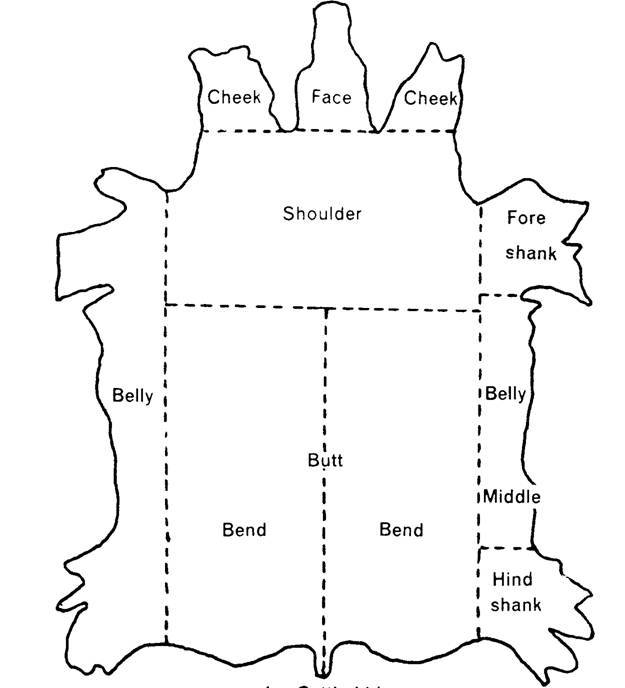While there are many types of leather available now, I will list ones that I tend to lean toward. This is not to say that other types are not accessible, it simply means that I prefer to sway from their use. There are some types of modern tanning processes that are just as effective, if not more so, however it seems as if they have a different feeling when running my hands over the pieces.
Vegetable (or “veg”) tanned leather is prepared by tanning the hide with different types of vegetation, as the name would suggest. Tannins found within plant matter, such as tree bark, wood, leaves, fruit or roots lend an additional point of color to the hide while it cures. Veg tanned leather is the most common type that you will see tooled in modern times, as it is most frequently marketed as “tooling leather”. Veg tanned leather is not difficult to come by, and you are able to find varying degrees of thickness to suit the needs of your project. Within the SCA, the thicker pieces of this type of leather are suitable for use in armor as well, as additional curing processes are able to be employed in hardening the leather by means of boiling, cooking or utilizing wax.
Brain tanned leather is a more intensive way of tanning to get a similar feel as veg tanned, but it is quite a messy process. The short version is that you take the brain of the donor animal, mush it up and spread it on the stretched raw hide. Brain tanned leather is generally very soft and you can wash it relatively well. I generally stray from this type of leather, as it has a certain smell that I find distasteful, but it is very effective. I find this method interesting because the brain of each animal is enough to tan its own hide. I also am only noting it here because it is a common opinion that this method is where one of the expressions my grandmother loved most came from – “I am going to tan your hide”.

Rawhide is not necessarily a tanned form of leather, but it is found with other leather products. It’s used frequently for drum heads or other projects that require a very rigid end result. It soaks water extremely well and becomes incredibly stiff when it dries. Rawhide also molds very well, so it is able to be utilized in projects that require significant rigidity, such as boxes.
With most types of leather, you are able to find sides that still have hair on them, but for most of my projects I utilize the hairless leather. I find that the hair on hides tends to bind when using waxed thread, so it can be obnoxious at times.
Within all types of leather, you are able to find different cuts or forms. I won’t list all of the different types of leather that are available, but there are several exotic types on the market now that include sting ray, salmon, shark and alligator to name a few.
Full grain hides have not been altered after the tanning process, so they have imperfections. These are the cuts that I generally like to use most because they have the most character before I touch them. Imperfections that you’ll find vary from bug bites to brand marks, tears and cuts. Especially within cattle, you will see what happened to the animal while it was alive, such as getting scarred from rubbing too closely against a fence.
Top grain hides are higher end and hold fewer imperfections. The top end forms are very common in my distributor within the “European splits”,
and have significantly less bug bites and the like. These cuts are usually thinner and bend easier than the full grain due to the sanding
and finishing process. They don’t patina by themselves as much as the full grain either and feel more synthetic to me.
Splits are made from taking the top grain off of the hide and feel quite fuzzy. As such, they are utilized in making suede. Splits are very flexible and versatile, but they do tend to cut and break easily as well. They are able to be tooled slightly, but are usually used in making projects that do not have to hold up to heavier strains.
Bonded leather is common within current leather practices such as upholstery leather or garments. They can be found in many “designer” patterns because they only utilize a portion of organic leather bit and pieces when being formed, sometimes as little as half of the product is leather – the rest being polyurethane binders that are pressed on a sheet of fiber. Modern market products such as purses utilize the bonded as well, so you will see cracking and a plastic like finish to the leather.